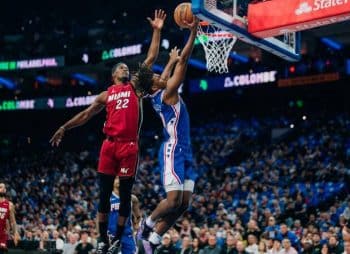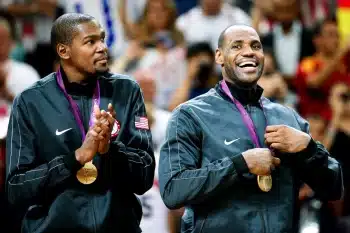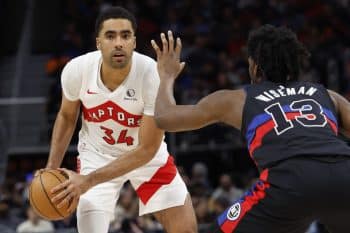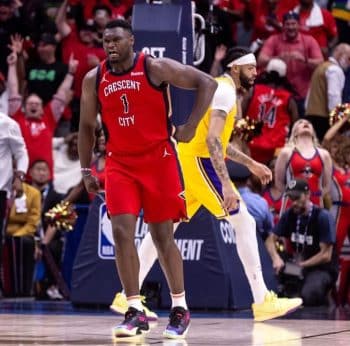NBA
What To Make Of O.J. Mayo?
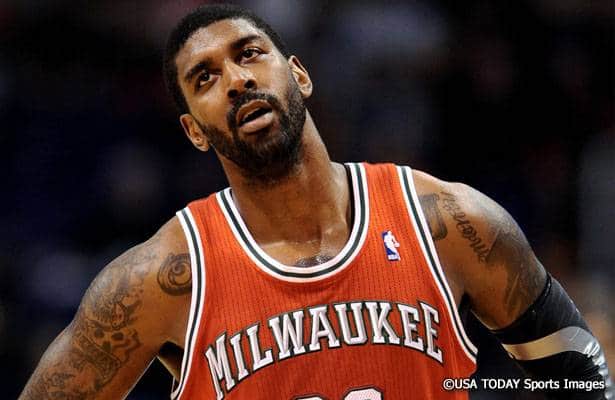
O.J. Mayo will begin his seventh year in the NBA when the 2014-15 season kicks off and the question still remains – will he ever fulfill the promise he showed in the early stages of his basketball career?
Coming out high school, Mayo was a McDonald’s All-American and a consensus top-five prospect, renowned for his ability to score the ball in a variety of ways, most notably his smooth jumper that he could knock down from seemingly anywhere on the court. He appeared well on his way to becoming a prototypical NBA two guard and possibly an All-Star-caliber player. After one year at USC, where he averaged 20.7 points per game shooting 44.2 percent from the field and 40.9 percent from three, he was selected third overall in the 2008 NBA Draft. Mayo was chosen ahead of now established stars like Kevin Love and Russell Westbrook.
Mayo spent his first four years in the NBA with the Memphis Grizzlies and played big minutes from the start. In his rookie season, he played and started in all 82 games, the only player on the team to do so. He was the team’s second-leading scorer behind only Rudy Gay, averaging 18.5 points per game, showing off the scoring prowess that many scouts had raved about. The team struggled, winning only 24 games, but Mayo’s performance was encouraging and all signs pointed to him being a foundation piece going forward.
In his second season, Mayo continued to score the ball well, averaging 17.5 points per game and improving his field goal percentage from 43.8 percent to 45.8 percent while once again starting in all 82 games. While he continued do a nice job scoring the ball, it was becoming apparent that he didn’t offer much else outside of his shooting. On the defensive end, he lacked intensity and was below average, and on the offensive end if he wasn’t knocking down shots he wasn’t doing much else to improve the Grizzlies’ chances. In his final two years in Memphis, he settled into the sixth man role. He was still able to average double-digit points in the next two seasons, but his efficiency dropped noticeably. After spending four years with the Grizzlies, the team decided to part ways with Mayo, electing not to extend him a qualifying offer, making him an unrestricted free-agent.
Mayo hoped to sign a lucrative, long-term deal but following the underwhelming end to his time in Memphis, those types of offers just weren’t available. He ended up signing a two-year deal with the Dallas Mavericks worth $8.2 million, with the second year being a player option. Mayo was excited about the fresh start and the opportunity to start.
“I’m just looking forward to going out there and getting the opportunity to show that I’m a starting guard in this league and I can compete with the other starting guards in this league and compete at a high level,” Mayo said after signing with the Mavs, according to ESPNDallas.com.
Even with his last two seasons in Memphis being less than impressive, there was a still a glimmer of that star potential and the Mavs were optimistic that he could put everything together and succeed in Dallas. This was seemingly a great fit for both sides. For the Mavs, the deal was relatively cheap and only for two years at the most. For Mayo, he had the opportunity to play his way into that big contract he felt he deserved.
For the first the time in two years, Mayo again started all 82 games. He was the team’s second-leading scorer, averaging 15.3 points and, efficiency wise, he had the best season of his career. The numbers would indicate that Mayo’s career was back on the upswing and that he had regained his footing in the league. However, anyone who has watched Mayo knows that stats don’t tell the whole truth. He was inconsistent and continued to struggle defensively. Even more concerning was the fact that his effort on a game to game basis was coming into question. Mavericks coach Rick Carlisle called him out following an April game against the Grizzlies saying he “failed to compete” against his former team. This wasn’t first instance of Carlisle expressing his frustration with Mayo. It was reported that in a mid-January game against the Rockets, Carlisle ripped into Mayo for his poor shot selection (he was 3-14 from the field in that game). It wasn’t that Carlisle had a problem with Mayo, he just knew he could do better.
“I love O.J. as a kid, as a person,” Carlisle said, according to The Dallas Morning News. “I spent more time with him this year than probably any other player I’ve ever had. With him, I’m a little like a Little League dad. I want him to do well so badly that sometimes it gets the better of me. But that’s OK, because if you care that much, it’s never a bad thing.”
The Mavericks fell short of the playoffs and following the season, Mayo decided to opt of his contract and test the free-agent market for the second time in two years.
The next chapter in Mayo’s NBA journey brought him to Milwaukee. The Bucks signed Mayo to three-year deal worth $24 million, with the expectation that he would be the team’s starting two guard. The Bucks also signed a number of other veterans including Gary Neal, Luke Ridnour, Carlos Delfino and Zaza Pachulia, as the team had aspirations of a playoff berth.
However, Mayo wouldn’t become the key contributor they envisioned and their playoff hopes quickly died. The team finished the year with the worst record in the NBA and Mayo had undoubtedly the toughest season of his professional career. His poor performance certainly wasn’t the only contributor to the team’s downfall, but it no doubt played a role. There were games where he displayed the scoring touch he had shown with both the Mavericks and the Grizzlies, unfortunately those games were few and far between. He finished the 2013-14 season playing in only 52 games and starting just 23. More alarming was once again his lack of intensity, at times looking almost disinterested. The fact that the team was buried in the standings well before the All-Star break certainly didn’t help but at this point it’s becoming increasingly difficult not question Mayo’s passion.
His career has now reached a bit of a crossroads. Approaching 27 years old, Mayo has still yet develop into the caliber of player many expected he would be when he was drafted. Could it be that the expectations were unfair and this is just the player that Mayo is? Sure. The frustrating thing is that he has shown that he can be so much more. It’s hard to believe, and even harder to accept that a player, who has never suffered a career-altering injury, wouldn’t be able to replicate the performance of his rookie season. It’s easy to understand why Carlisle, at times, felt the need to rip into Mayo. Mayo will likely never be a game-changing defender but the ability is there on the offensive end. He isn’t a superstar and probably won’t ever be an All-Star but there is no reason why he can’t be 15-18 PPG scorer, a 40 percent plus three point shooter and a four-plus assist type guy, while competing defensively.
His value is at all-time low. Fortunately for him, and maybe unfortunately for the Bucks, he is under contract for two more years at $8 million per year. With Jason Kidd stepping in as the team’s new head coach, Mayo will have the chance to wipe the slate clean and put last year behind him. How he responds over the next two seasons will be a real barometer for the type of player he truly is and what direction the rest of his career will take.
